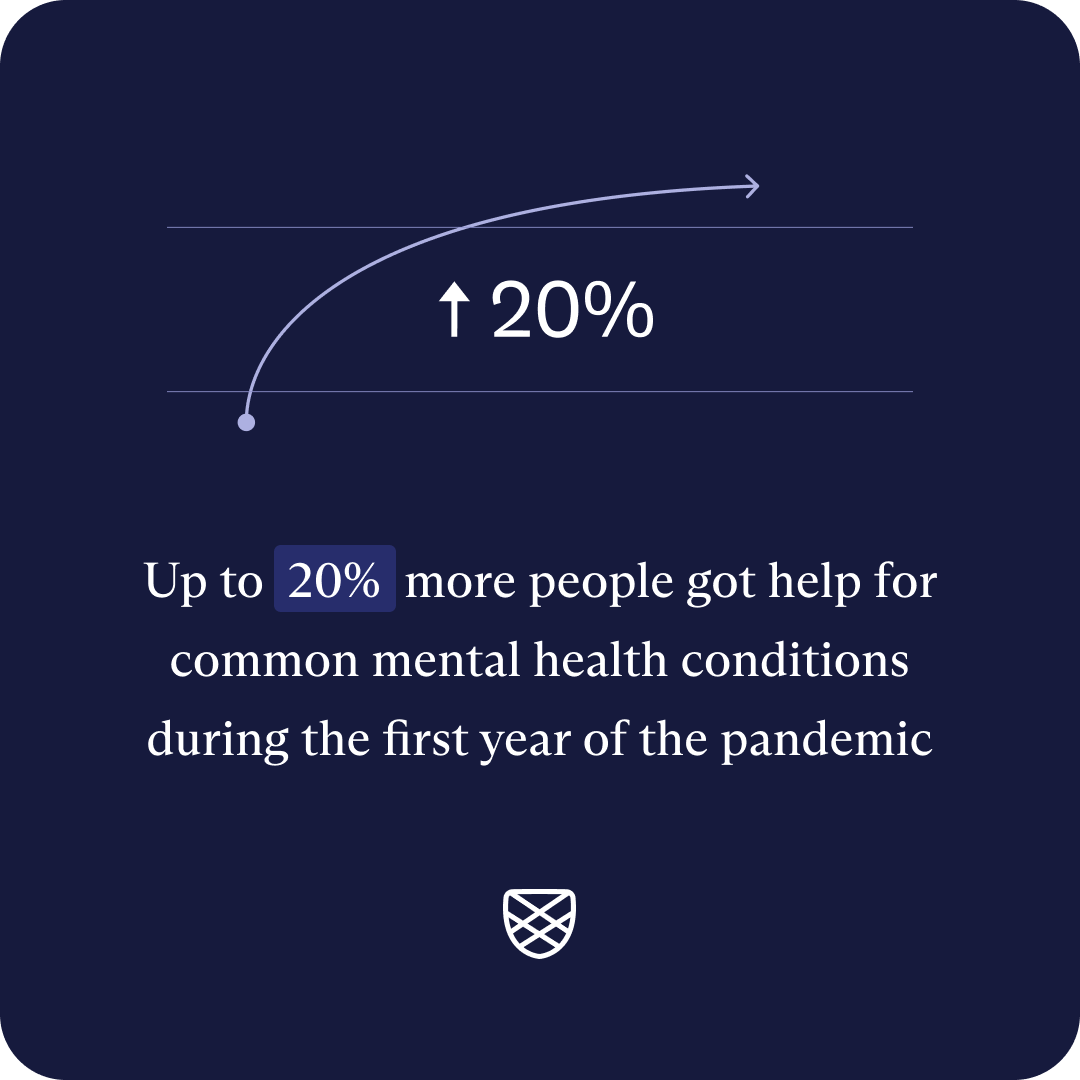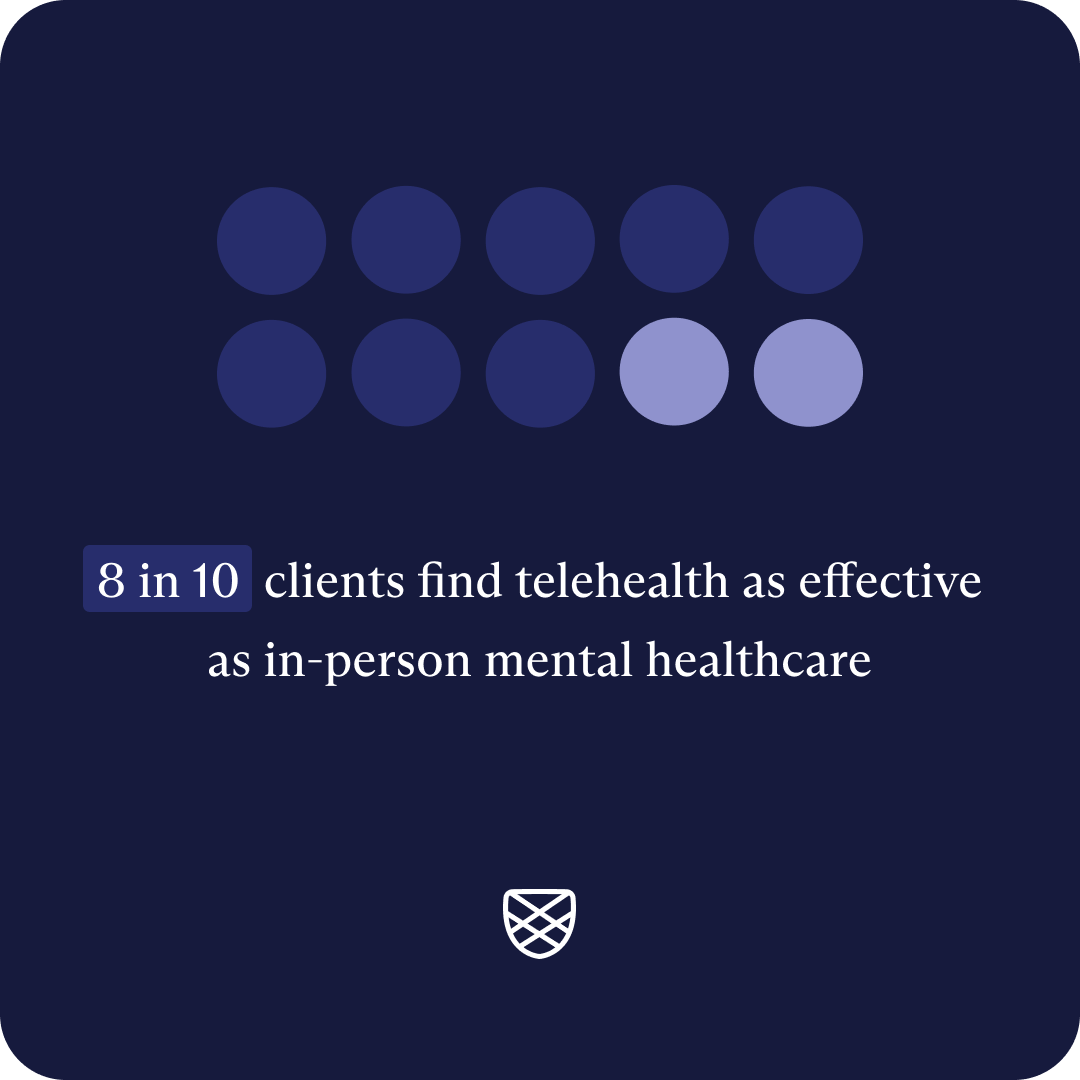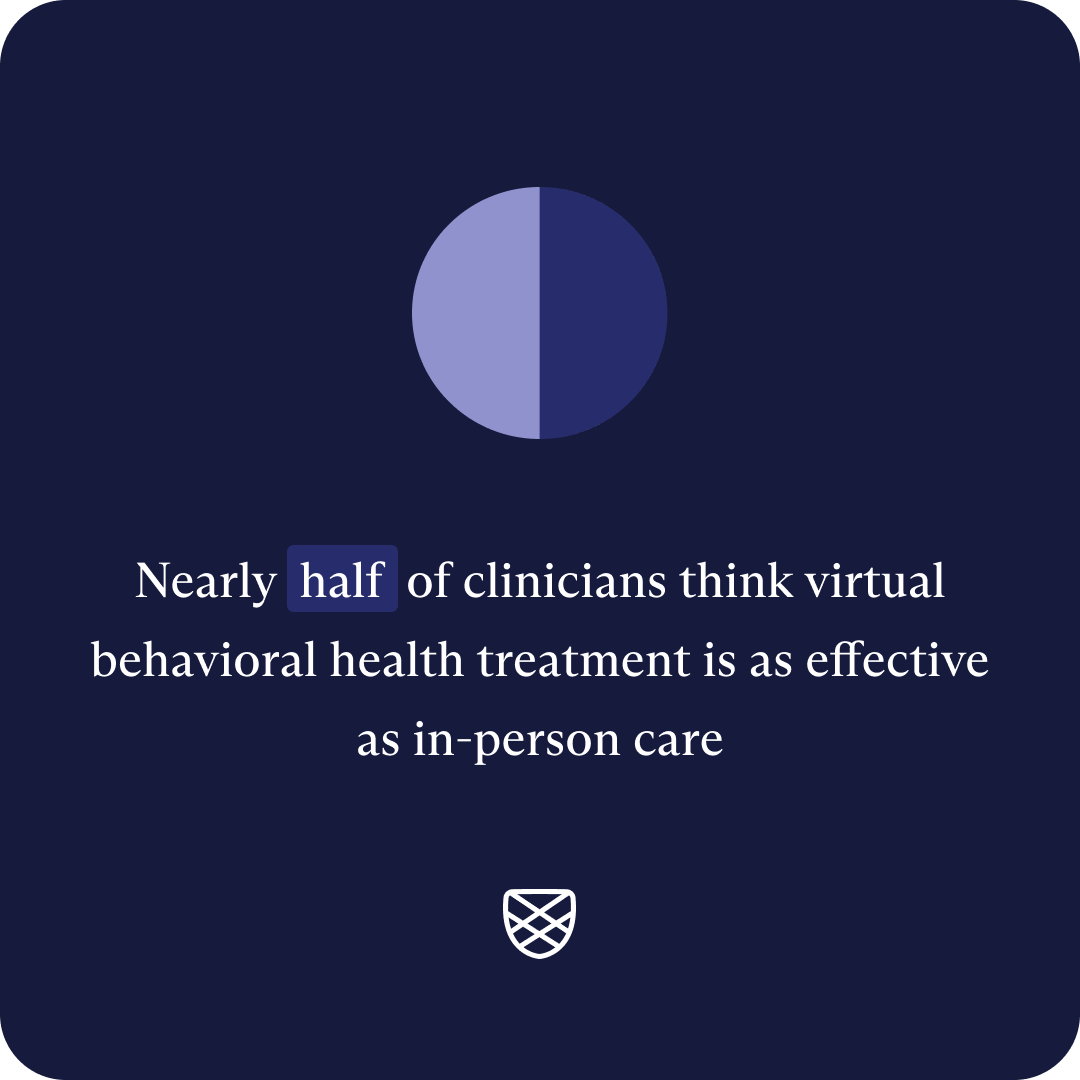
Table of Contents
The State of Virtual Mental Healthcare in 5 Stats
Written By: Charlie Health Editorial Team

Clinically Reviewed By: Dr. Don Gasparini
February 13, 2024
4 min.
Data that highlights how virtual mental healthcare has grown since the pandemic, plus tips on how to find a behavioral telehealth option that works for you.
Learn more about our Clinical Review Process
Table of Contents
Since the onset of the pandemic, telehealth has become ubiquitous within the healthcare landscape, including in mental healthcare. In some parts of the United States, the proportion of mental health treatment facilities providing telehealth services more than doubled between 2019 and 2022, data shows.
While many policies increasing the availability of telehealth services were temporary, expiring with the COVID-19 public health emergency last May, virtual mental healthcare has staying power. Telehealth utilization has remained above pre-pandemic levels in recent years, and most U.S. senators backed a bill last summer that would expand telehealth services nationwide.
Though telehealth services have expanded over time, disparities still exist. According to the Centers for Disease Control and Prevention (CDC), nearly four in 10 American adults used telehealth services in 2021, but usage was significantly higher among White adults compared to Asian, Black, and Hispanic adults. Also, telemedicine use was highest among those living in the Northeast and West, and usage typically increased with education level and family income.
Below, Charlie Health culled five statistics that shed light on the rise and state of virtual mental healthcare. We also offer some tips for finding accessible, virtual mental health services. Whether you’re a virtual care novice or expert, it’s important to stay informed about the state of telehealth and know how to get needed mental health services.
Join the Charlie Health Library
Get mental health updates, research, insights, and resources directly to your inbox.
You can unsubscribe anytime.
5 statistics on the rise and state of virtual mental healthcare
1) Up to 20% more people got help for common mental health conditions during the first year of the pandemic

Throughout 2020, more people sought help for anxiety, depression, and adjustment disorders, with a 10 to 20% increase by the year's end, data shows. According to the researchers, this increase is primarily due to a surge in behavioral telehealth services, as more than half of people sought mental healthcare virtually (compared to the less than 4% of Americans who had a telehealth visit in 2019). The biggest jump in care (20%) was among those with anxiety, which aligns with earlier data showing anxiety as the most common mental health effect of the pandemic.
2) Insurance and race-based disparities exist in virtual mental healthcare
Although telehealth expanded access to behavioral health services during the pandemic, disparities still exist, particularly on the basis of insurance type and race. According to the study above, mental health facilities that accepted Medicaid were less likely to offer telehealth services over the study period than those that accepted private insurance. Also, mental health facilities in counties with a higher proportion (>20%) of Black residents were less likely to offer telehealth services than those with fewer Black residents.
3) 8 in 10 clients find telehealth as effective as in-person mental healthcare

A study of patients in a telehealth treatment program for substance use disorder (SUD) found that eight in 10 participants (82%) said telehealth visits met their needs “equally well” or “better” than in-person visits. Even more participants (86.2%) said they were “very satisfied” or “satisfied” with the quality of their virtual mental healthcare program.

4) Nearly half of clinicians think virtual behavioral health treatment is as effective as in-person care

A study following nearly 400 behavioral health clinicians from June 2020 to May 2021 found in the final survey that nearly half believed virtual and in-person treatments were equally effective. This marked a major shift in the perception of virtual treatment efficacy over time. Only about one in 10 (13%) saw telehealth as more effective than traditional care in June 2020, but by May 2021, that number had risen to three in 10 (30%).
5) 8 in 10 mental health clinicians plan to continue with virtual treatment
In that same study, the vast majority of clinicians (88.3%) said they were “somewhat” or “very” likely to continue providing mental healthcare virtually as of May 2021. This data highlights an increase of nearly half in the likelihood of providing virtual care during the course of the study.
How to access virtual mental healthcare
Virtual mental healthcare is here to stay and can be an accessible alternative to in-person care. If you’re interested in starting therapy or another kind of mental healthcare option virtually, here are three tips for how to get started:
1) Do some research
You can search online, ask for recommendations from friends or family, or consult your primary care physician and insurance company to find a virtual mental health provider or platform that offers teletherapy services.
2) Choose a provider and schedule an appointment
Once you find potential providers, consider factors like their qualifications, experience, cost, and the types of therapy they offer. Make sure they accept your insurance if you have it. Then, contact the provider or platform to schedule an appointment. Many offer online scheduling tools or phone lines for booking.
If you’re looking for more than once-weekly mental health support that's in-network with many major insurance providers, including commercial plans and Medicaid, consider Charlie Heath.
3) Make sure your tech is ready to go
Ensure you have the necessary technology for virtual sessions, such as a computer, smartphone, or tablet with a reliable internet connection. You may also need to download specific software or apps for video calls.
References
https://www.ncbi.nlm.nih.gov/pmc/articles/PMC9302910/
https://www.ncbi.nlm.nih.gov/pmc/articles/PMC8429128/
https://link.springer.com/article/10.1007/s11606-020-06358-0
https://jamanetwork.com/journals/jama-health-forum/fullarticle/2800138
https://www.cdc.gov/nchs/products/databriefs/db445.htm
https://jamanetwork.com/journals/jamanetworkopen/fullarticle/2805968


